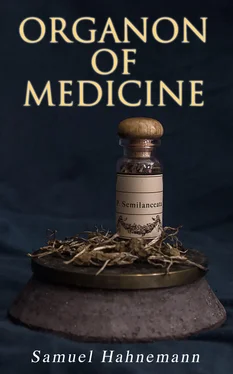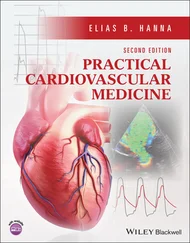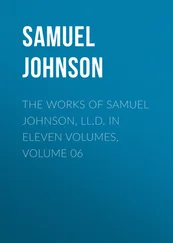By cutting holes in the diseased body, which were converted into chronic ulcers kept up for years by the introduction of foreign substances (issues, setons), they sought to draw off the materia peccans from the (always only dynamically) diseased body, just as one lets a dirty fluid run out of a barrel through the tap-hole. By means also of perpetual fly-blisters and the application of mezereum, they thought to draw away the bad humors and to cleanse the diseased body from all morbific matters – but they only weakened it, so as generally to render it incurable, by all these senseless unnatural processes.
I admit that it was more convenient for the weakness of humanity to assume that, in the diseases they were called on to cure, there existed some morbific material of which the mind might form a conception (more particularly as the patients readily lent themselves to such a notion), because in that case the practitioner had nothing further to care about than to procure a good supply of remedies for purifying the blood and humors, exciting diuresis and diaphoresis, promoting expectoration, and scouring out the stomach and bowels. Hence, in all the works on Materia Medica, from Dioscorides down to the latest books on this subject, there is almost nothing said about the special peculiar action of individual medicines; but, besides on account of their supposed utility in various nosological names of diseases, it is merely stated whether they are diuretic, diaphoretic, expectorant or emmenagogue, and more particularly whether they produce evacuation of the stomach and bowels upwards or downwards; because all the aspirations and efforts of the practitioner have ever been chiefly directed to cause the expulsion of a material morbific matter, and of sundry (fictitious) acridities, which it was imagined were the cause of diseases.
These were, however, all idle dreams, unfounded assumptions and hypotheses, cunningly devised for the convenience of therapeutics, as it was expected the easiest way of performing a cure would be to remove the material morbific matters (si modo essent!).
But the essential nature of diseases and their cure will not adapt themselves to such fantasies, nor to the convenience of medical men; to humor such stupid baseless hypotheses diseases will not cease to be (spiritual) dynamic derangements of our spirit-like vital principle in sensations and functions, that is to say, immaterial derangements of our state of health.
The causes of our maladies cannot be material, since the least foreign material substance,10 however mild it may appear to us, if introduced into our blood-vessels, is promptly ejected by the vital force, as though it were a poison; or when this does not happen, death ensues. If even the minutes splinter penetrates a sensitive part of our organism, the vital principle everywhere present in our body never rests until it is removed by pain, fever, suppuration or gangrene. And can it be supposed that in a case of cutaneous disease of twenty years standing, for instance, this indefatigably active vital principle will quietly endure the presence of such an injurious foreign, material exanthematous substance, such as a herpetic, a scrofulous, a gouty acridity, etc., in the fluids of the body? Did any nosologist ever see with corporeal eyes such a morbific matter, to warrant him in speaking so confidently about it, and in founding a system of medical treatment upon it? Has any one ever succeeded in displaying to view the matter of gout or the poison of scrofula ?
10. Life was endangered by injecting a little pure water into a vein. (Vide Mullen, quoted by Birch in the History of the Royal Society.)
Atmospheric air injected into the blood-vessels caused death. (Vide J. M. Voigt, Magazin fur den neuesten Zustand der Naturkunde, i, iii, p. 25.
Even the mildest fluids introduced into the veins endangered life. (Vide Autenreith, Physiologie, ii, Û 784.)
Even when the application of a material substance to the skin, or to a wound, has propagated diseases by infection, who can prove (what is so often maintained in works on pathology) that some material portion of this substance has penetrated into our fluids or been absorbed?11 The most careful and prompt washing of the genitals does not protect the system from infection with the venereal chancrous disease. The slightest breath of air emanating from the body of a person affected with smallpox will suffice to produce this horrible disease in a healthy child.
11. A girl in Glasgow, eight years of age, having been bit by a mad dog, the surgeon immediately cut the piece clean out, and yet thirty-six days afterwards she was seized with hydrophobia, which killed her in two days. (Med. Comment. of Edinb., Dec. 2, vol. ii, 1793.)
What ponderable quantity of material substance could have been absorbed into the fluids, in order to devdop, in the first of these instances, a tedious dyscrasia (syphilis), which when uncured is only extinguished with the remotest period of life, with death; in the last, a disease (smallpox) accompanied by almost general suppuration,12 and often rapidly fatal? In these and all similar cases is it possible to entertain the idea of a material morbific matter being introduced into the blood? A letter written in the sick-room at a great distance has often communicated the same contagious disease to the person who read it. In this instance, can the notion of a material morbific matter having penetrated into the fluids be admitted? But what need is there of all such proofs? How often has it happened
that an irritating word has brought on a dangerous bilious fever; a superstitious prediction of death has caused the fatal catastrophe at the very time announced; the abrupt communication of sad or excessively joyful news has occasioned sudden death? In these cases, where is the material morbific principle that entered in substance into the body, there to produce and keep up the disease, and without the material expulsion and ejection of which a radical cure were impossible?
12. In order to account for the large quantity of putrid exerementitious matter and foetid discharge often met with in diseases, and to be able to represent them as the material substance that excites and keeps up disease – although, when infection occurs, nothing perceptible in the shape of miasm, nothing material, could have penetrated into the body – recourse was had to the hypothesis, that the matter of infection, be it ever so minute, acts in the body like a ferment, bringing the fluids into a like state of corruption, and thus changing them into a similar morbific ferment which constantly increases with the disease and keeps it up. But by what all-potent and all-wise purifying draughts will you purge and cleanse the human fluids from this ever reproductive ferment, from this mass of imaginary morbific matter, and that so perfectly, that there shall not remain a particle of such morbific ferment, which, according to this hypothesis, must ever again, as at first, transform and corrupt the fluids to new morbific matter? Were that so it would evidently be impossible to cure these diseases in your way! – See how all hypotheses, be they ever so ingeniously framed, lead to the most palpable absurdities when they are not founded on truth! – The most deeply rooted syphilis may be cured, after the removal of the psora with which it is often complicated, by one or two small doses of the decillionfiold diluted and potentised solution of mercury, whereby the general syphilitic taint of the fluids is forever (dynamically) annihilated and removed.
The champions of this clumsy doctrine of morbific matters ought to be ashamed that they have so inconsiderately overlooked and failed to appreciate the spiritual nature of life, and the spiritual dynamic power of the exciting causes of diseases, and that they have thereby degraded themselves into mere scavenger-doctors, who, in their efforts to expel from the diseased body morbific matters that never existed, in place of curing, destroy life.
Читать дальше












